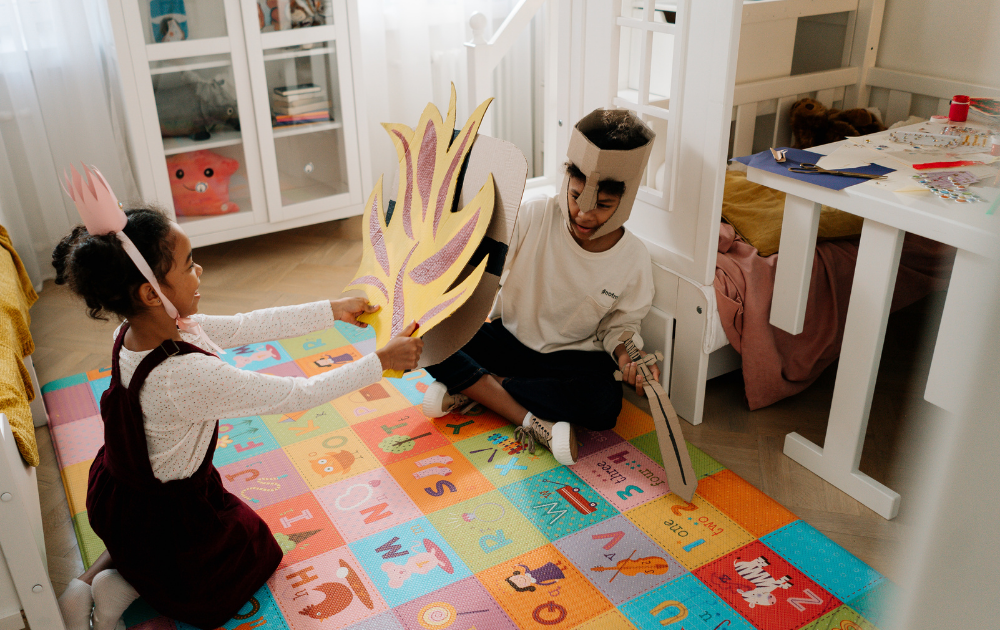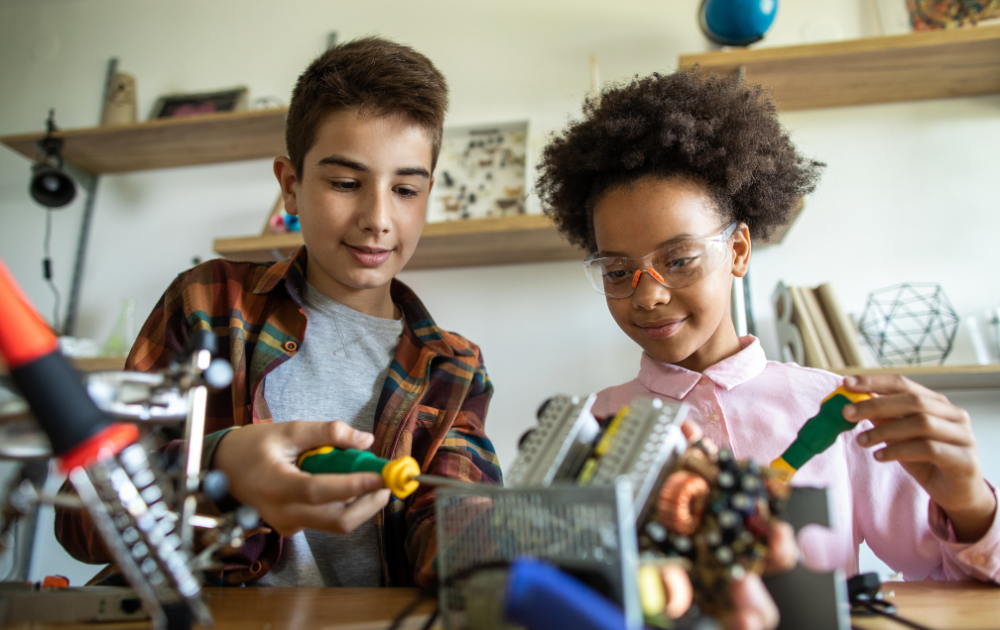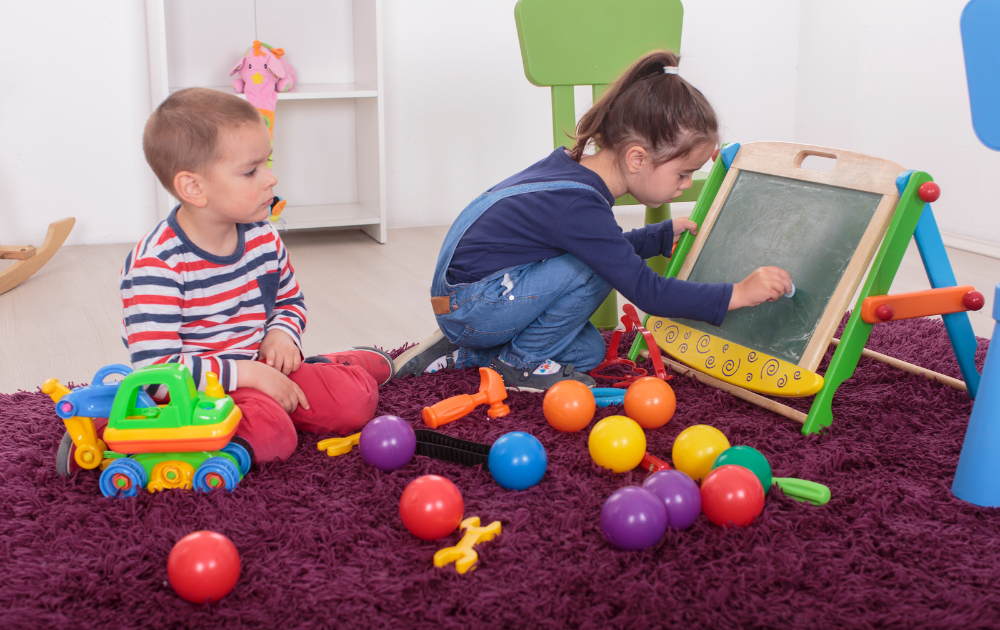
10 Mar Productive Play: Why It Matters For Your Child’s Development
All parents love reading bedtime stories to their children. Watching them as they listen intently to the narrative, then get drowsy, and finally, fall asleep, is a rewarding experience for all parents.
Reading to a child is an important way of fostering the bond between parent and little one. But it is only one method of helping their brains and emotions develop.
Productive play is a more physical activity, and it is just as beneficial as reading to them at night time, which is passive.
What defines productive play (also called constructive play) and how can parents ensure their child is engaging in it frequently enough?
In this post, we clarify the definition of productive play and offer tips for helping your child undertake it, in all its wonderful forms.
Productive play is any activity that promotes brain development and teaches or reinforces new skills. For example: if a child builds a bridge from chairs and bed linens, or a “castle” with foam or wooden blocks, that’s a prime example of constructive play. It challenges children to tackle something new, and when they achieve it they enjoy a sense of genuine accomplishment.
Types of productive play:
1. Math-based games.

Any game that helps children learn their numbers works to help them learn math skills they’ll use their entire lives. Helping your child become familiar with, then fluent in, numbers – how to use them, how to do tasks like simple addition and multiplication – offers untold benefits for everyday life. A little research into math games for children of all ages is a good place to start. Here’s a great website where you’ll find some simple but enjoyable math games for your child: (https://www.scholastic.com/teachers/articles/teaching-content/7-games-practice-math-facts).
2. Language and reading.

This style of constructive play takes books out of their night time routine and makes learning their ABCs fun. Children’s books with plenty of colorful illustrations are terrific tools for helping your child make the link between how a letter sounds and looks, and how it’s used in words. To make this truly productive, ask your child to tell you an original tale, about their favorite animal perhaps, and – if they’re old enough – suggest they write it down.
3. Creative play.

This category refers to a play that stimulates the imagination. It also develops problem solving skills. For example: let’s say your child wants to mount a talent show in the backyard. Suggest they set up a platform (nothing too complicated!) and use a sheet over the clothesline as the curtain. They need to use their organizational skills as well as their creative ones, particularly if they draw their siblings and friends into the show. Who will go first? What talent will each child exhibit? As “managers” of the talent show, they demonstrate not just creativity by singing (or doing magic tricks, etc.) but by organizing the event and helping others perform their numbers smoothly. Then, as parents, you can provide an audience, and cheer everyone on as they sing and dance their hearts out
Tips to help them engage in productive play:
There are plenty of ways you as parents can launch your child into an activity that is productive, including:
1. Create a space where they have free reign to play.

The space doesn’t have to be enormous, but give them enough room to build things and use basic tools to create new things. Clear the area, so it is free of anything they could trip on or might get in their way. A corner of the family room, perhaps? The backyard, providing you can keep an eye on them from a nearby window? They need space to let their imagination and energy cut loose.
2. Give them safe tools they can easily handle.

Construction paper, crayons, pencils, water soluble colored pens, string, paste, and tape are all essential for creating something new. Obviously young children shouldn’t handle scissors, but if necessary you can step in briefly and help.
3. Show, but don’t do!

This means that it’s fine to show them how to accomplish a task they’ve never tackled before, but then step back and let them work on it. Even if they get something wrong at first – which they likely will, because learning takes time – they are absorbing important knowledge. Learning a task is about so much more than dexterity and understanding the steps needed to make something happen. It’s about developing patience, focus, and concentration, and giving themselves enough time to get it wrong, then forge ahead and get it right. They will feel an enormous amount of pride and self-confidence once the new project is complete or the problem is solved.
7. Know when to leave them on their own.

Nothing is more beautiful than the face of a child in rapt attention, focused on drawing, reading a book, or solving a math problem. Seeing their beaming pride when they’ve successfully completed a project is one of the greatest joys of parenthood. That’s why, as parents, it’s vital that you leave them to accomplish the work on their own, and are there with praise and enthusiasm when they show you their finished efforts. Letting them tackle productive play activities on their own, no matter what kind of endeavor it is, develops skills, confidence, and self-esteem. Fostering these traits in children is one of a parent’s most important roles.
Parents know that developing problem-solving skills, confidence in their own abilities, and social skills like patience and good manners are all vital to the emotional and physical health of their child. Productive play in all its many forms is one way to ensure your child is on the path to intellectual, physical and emotional well-being, as they are all crucial to a child’s healthy development and growth, and kids thrive when challenged to undertake projects that are instructive, but that is, most of all, fun!